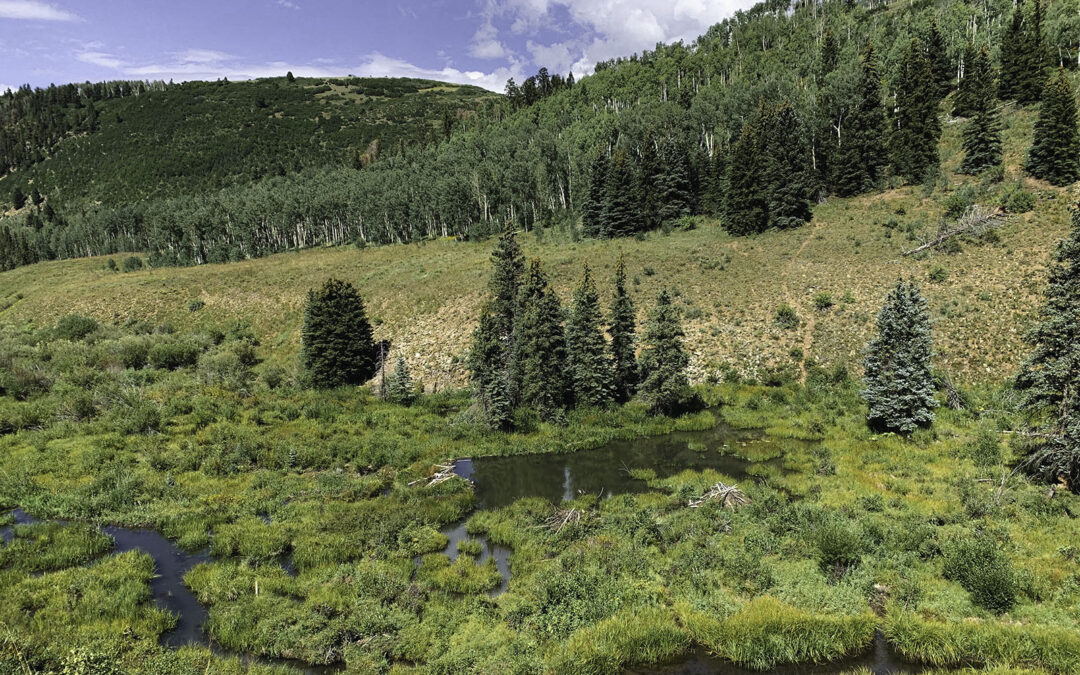A recently published report concludes that restoring headwaters streams and wetlands enhances wildfire and drought resilience. The report, authored by Jackie Corday and published by American Rivers, reviews and synthesizes published and ongoing research on low-tech process-based restoration (LTPBR) in Western headwaters regions.
LTPBR projects include beaver dam analogs (BDAs), temporary structures made with natural materials (e.g., willow branches, native sod, and cobble). BDAs mimic the influence of beaver dams. As they trap sediment, stream levels gradually rise, floodplains reconnect, and aquifers rehydrate. As incised streams begin to reconnect with their historic floodplains, they become habitable by beavers, which can maintain and expand upon these temporary structures.
With the presence of beavers, a keystone species across North America, streams return to their natural state prior to the intervention of non-indigenous people. Healthy, functioning floodplains attenuate peak streamflows to recharge groundwater, reduce flood risks, filter sediment and toxins, and provide critical plant and wildlife habitat.
The LTPBR report is especially germane to the Forest Service, which manages millions of acres of headwaters lands across the West and recently received $3.3 billion for wildfire risk reduction. With support from the timber industry, much of that money is being directed toward “forest treatment” projects that involve logging carbon-sequestering trees with petroleum-powered heavy equipment — simultaneously reducing carbon sequestration and increasing greenhouse-gas emissions. By comparison, LTPBR projects mainly rely on manual labor and small equipment.
Stream and wetland degradation began with the practical extermination of beavers in the 1800s, long before records were kept to document the damage. Industrial mining, logging and associated road building followed on the heels of beaver removal, intensively degrading thousands of miles of streams and thousands of acres of wetlands in Western national forests. LTPBR offers a practical way forward. The low cost of LTPBR projects enables implementation at a scale capable of responding to the urgent need to address forest resilience in the face of climate change.
Highlights of Corday’s report include a 2020 study of large Western wildfires that found riparian vegetation around beaver complexes had a three times greater rate of survival than around stream segments without beavers. Since increasingly common weather-driven fires are unstoppable, restoring national forest streams and wetlands can provide critical oases in fires-scorched landscapes, maximizing the survival of iconic species needed for biodiversity.
Case studies cited in Corday’s report also document water-quality improvements resulting from LTPBR projects. According to the Forest Service, national forests and grasslands are “the largest source of fresh water in the U.S. under a single manager,” supplying some 180 million people. Given well-publicized threats to Western water supplies, Corday’s report provides a timely reminder that LTPBR projects can, in addition to improving drought and wildfire resilience, help address the Forest Service’s original legislative mandate “to protect and enhance water supplies.”


